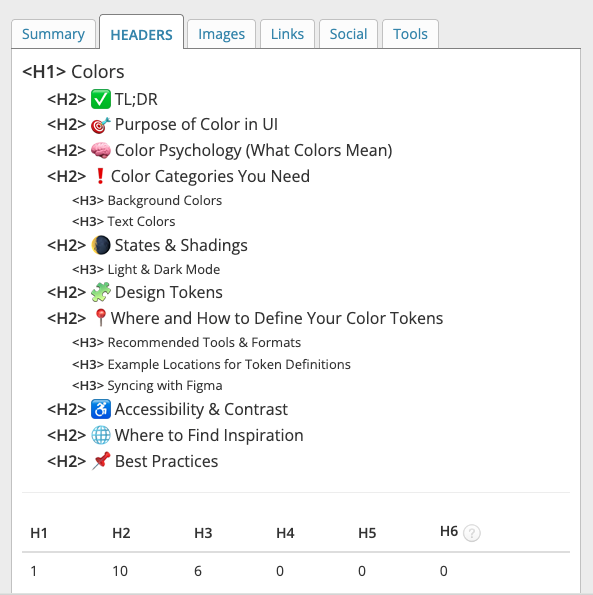Headings
General Principles
- Every page should contain exactly one
<h1>, typically representing the page title. - Headings should follow a strict hierarchical order:
- Use
<h2>directly under<h1>,<h3>under<h2>, and so on. - Avoid skipping levels (e.g., do not go from
<h2>to<h4>).
- Use
- Do not use heading tags for styling purposes only – use them semantically.
- Avoid visual headings (e.g., sidebar labels) using heading tags – use
<span>or styled components instead. - To change the visual formatting of a heading, use CSS rather than using a heading level that doesn't fit the hierarchy. Don't make up your own formatting for headings.
Design & Styling
- Define a consistent visual appearance for each heading level (font size, weight, spacing).
- Use design tokens or CSS variables to make styles reusable and themable (e.g.,
--heading-h2-font-size). => see Color Guidelines - Do not use headings to “fake” visual hierarchy – keep semantic structure and styling separate.
Writing Guidelines
Headings should be clear, meaningful, and descriptive – vague headings harm accessibility and usability.
- Please use active language in headings:
- ✅ Good: “Apply for a Doctoral Position”
- ❌ Bad: “Doctoral Position Application Processed”
- Headings should summarize the content below them – avoid generic titles like “Information” or “Overview”.
Do's and Don'ts
| ✅ Do | ❌ Don’t |
|---|---|
Use one <h1> per page | Use multiple <h1>s |
Follow proper order: <h1> → <h2> → <h3> | Skip levels: <h1> → <h3> |
| Use headings to structure content | Use headings for styling only |
| Write clear, active headings | Use vague or passive headings |
Additional Resources
Sources that inspired the heading guidelines:
Useful tools:
- SEO META in 1 CLICK
Offers the section Headers, which can help to analyze the structure of the current page
